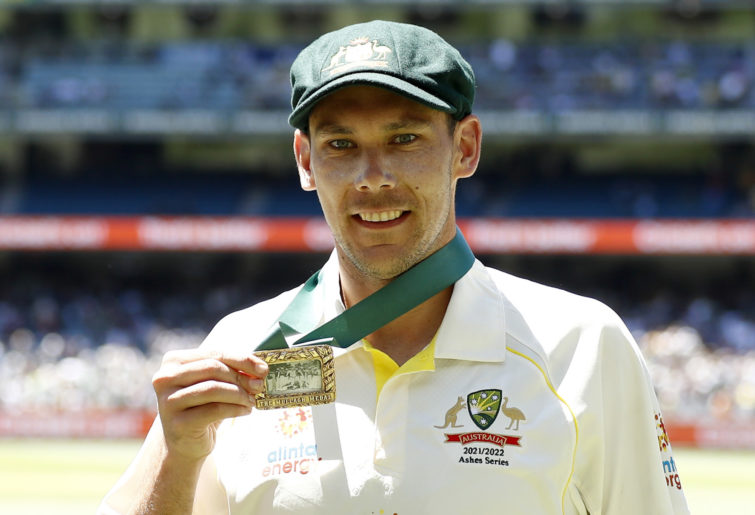I sent a message to a mate this week saying, “What dirt does Scott Boland have on the selectors that they would select him for Brisbane, Michael Neser’s home ground?”
The comment was a poor attempt at humour but the question must be asked what the selection policy for Australian cricket is at the moment.
Last summer, Neser was selected as part of the initial squad to take on England. Boland was drafted in, ostensibly as cover, for the Melbourne Test and the rest, including that famous 6/7 innings, is history.
The criteria for elevating Boland was simply ‘horses for courses’, with the selectors valuing Boland’s experience at the MCG.

(Photo by Darrian Traynor – CA/Cricket Australia via Getty Images)
In that case, they have a fair point. But what has changed in the selectors’ thinking to abandon that policy so quickly after it was so successful one summer later?
I’m not saying Boland should not play Test cricket or is not the right choice. I’m not anti-Boland.
What I’m against is selection policy changing to suit one person for one time and not another person for another time. Be consistent.
The records of both Boland and Neser at first-class level are outstanding.
Neser pips Boland in strike rate (50.4 for to 54.8) and average (23.62 compared to 24.65), but Boland has a slightly better economy rate (2.71 compared to 2.80). The two men take roughly the same number of wickets per match (3.54 for Neser and 3.56 for Boland).
All that indicates is that, on paper, Neser is probably a slightly more consistent bowler.
Both men’s first-class numbers stack up against Mitchell Starc, Pat Cummins and Josh Hazlewood. Neser has a better strike rate than Hazlewood (54.4), and Boland’s is virtually identical. Both men have better averages and economy rates than Starc and their economy rates are on par with Hazlewood.
Starc and Cummins both have strike rates of below 50 (even the great Glenn McGrath never managed that). Starc, Cummins and Hazlewood also have slightly higher average wickets per Test than both Boland and Neser.
Based on these stats, Neser has had greater consistency over his career than Starc, Boland and Hazlewood.
Boland has the best economy rate but takes the most number of balls per wicket of everyone except Hazlewood.
Of Boland’s 25 Test wickets, 14 came in 11 overs. In the subsequent 126.1 overs, Boland has taken 11 wickets.
Boland is a fabulous bowler who tends to take wickets in clumps, as shown once again by his two wickets in an over against South Africa.
That’s not a bad thing, but that’s also why he has an average of 54 in first-class cricket.
Based on record, Starc and Cummins must be the first two picked because the only two Australians ahead of Cummins for Test strike rates are Fred Spofforth and Jack Saunders, whose careers finished before 1910.
On last year’s selection policy, Neser should have played in Brisbane. On last year’s selection policy, Boland should play in Melbourne.
Will Boland or Neser get another game for Australia? That depends on the selection policy of the day. The selectors need to clarify their policy so that everybody, especially the Australian public, understands it.
>Cricket News

%20(3).jpeg)




0 Comments